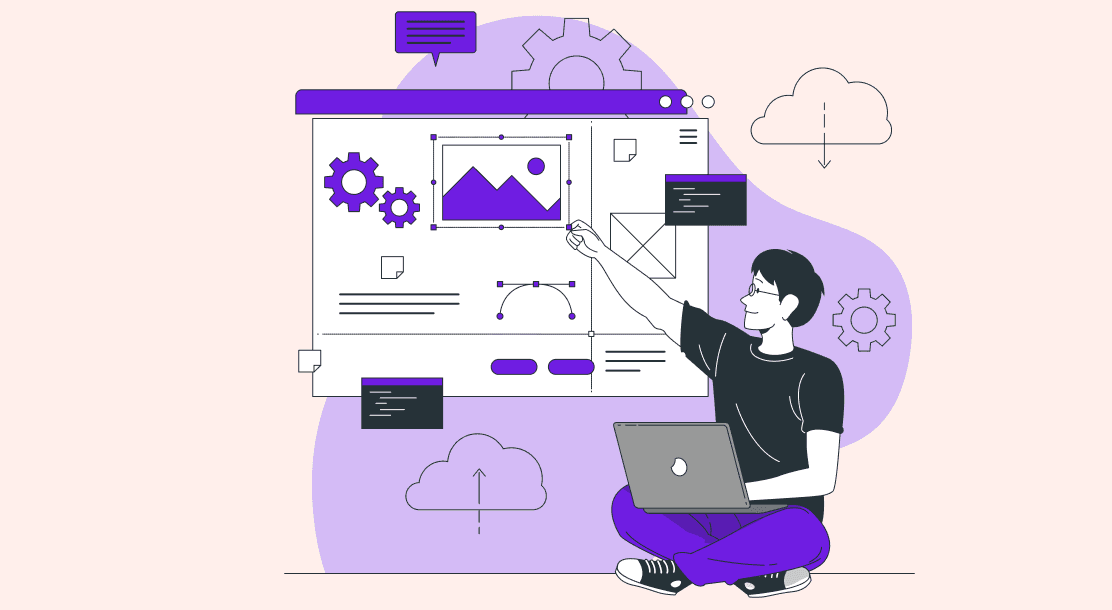
Table of Contents
- How to Learn Graphic Design by Yourself
- 5 Online Courses to Learn Graphic Designing Online
- How to Select the Most Appropriate Graphic Design Course
- Key Takeaways
- Conclusion
- FAQs
“Graphic design is the manufacturing of visual compositions using text, images, color, and shape to solve problems and express ideas.”
Graphic design plays a vital role in any business’s marketing, from branding and web design to print promotions and internet advertising.
There are plenty of online graphic design courses. One must regularly practice and improve their design talents, which requires time and effort. They will also need to keep up with the latest design trends and technology.
Graphic design is not hard to master, but it does involve out-of-the-box thinking, a flair for design and art, and time and dedication. It involves acquiring the required tools and comprehension and applying design ideas and theories that can be found on online platforms.

Going to a design school and enrolling in a degree program is one apparent option to study graphic design. However, this is not the only route. If you are passionate about design and want to learn more, there are many tools and online graphic design lessons you can use.
With a strong foundation in graphic design theory and practice, you will be able to jump right in. You will also require experience with desktop design applications like Illustrator and InDesign and image-editing programs like Photoshop.
You can pick self-directed study through a decent online graphic design school or certification that will offer you a suitable foundation for an in-depth understanding of all of these.
Some firms may require you to have a degree, qualification, or certification to be considered for a position; however, most employers value a designer’s portfolio and talents. Experiential learning is also necessary. To give themselves a leg up on the employment market, graphic designers should continuously hone their art and work on personal projects.
Understanding the eight categories of graphic design can help you locate the right talents for the assignment, whether you are an aspiring designer or looking for design services for your company.

The following are the eight primary forms of graphic design:
- Graphic design for visual identity
- Graphic design for marketing and advertising
- Graphic design of the user interface
- Graphic design for publications
- Graphic design for packaging
- Animation and motion graphics
- Graphic design for the environment
- Graphic design for art and illustration
How to Learn Graphic Design by Yourself

As with any new discipline, knowing the basics is the first step. Now that you have decided graphic design is the path you want to be on, you will need some direction on how to get there.
Learn to draw
You cannot effectively create if you cannot express new ideas; therefore, learning to sketch is essential. Your best option is if you have the basics to know how to articulate your thoughts graphically.
Learn how to utilize the appropriate software
If you are perseverant and resourceful, you can find any information online. You must know how to utilize specific design tools to be a professional graphic designer.
Learn the fundamentals of design
Learn about color theory, grids, space, and typography, all fundamental visual design principles.
Take it a step further
Do not stick to the basics and specialize in an area of interest once you have mastered the fundamental design abilities. Taking it further will increase the value of your expertise and allow those looking for something specific to find you.
Logos, invites, site design, user interface design, iconography, infographic, mobile app design, and so forth are all possibilities.
It is all about practice
You will never feel competent as a designer unless you work on a project and use what you have learned. Learn on the job, learn on personal projects, and constantly apply new abilities to real-world situations.
Build your portfolio
No one will hire a designer whose work they have not seen before. As a result, having a portfolio that demonstrates your diversity of talents and previous accomplishments is critical.
5 Online Courses to Learn Graphic Designing
The following is a compiled list of five online graphic design courses in graphic design.
Professional Certification in Google UX Design on Coursera

Duration: 6 months at a rate of 10 hours each week
Rating: 4.8 out of 5
Level: Beginner
You can earn a certification in less than six months of part-time study.
The following is a synopsis of the course:
Google has established a UX Design degree program on Coursera to assist students in preparing for an entry-level career as a UX designer. You will learn the fundamentals of UX design, how to perform user research, and how to create mockups using tools like Figma and Adobe XD in this class.
This Google UX certification program is divided into seven modules covering UX principles, terminology, and industry-standard technologies. These classes cover the entire design process from start to finish, covering the following topics:
- Identifying with users
- Identifying user annoyances
- Using issue statements to define user requirements
- Coming up with design concepts
- Wireframes, mockups, and prototypes are all things that we do
- Usability studies to get feedback on designs and put them to the test
- Iterating on designs in response to customer feedback
- Conducting audits of competitors
Hands-on learning is emphasized heavily throughout the curriculum. Courses contain a variety of readings, evaluations, hands-on exercises, and videos. Learners will have three portfolio projects to present to potential employers in their job applications once they have completed the program.
Learners will be able to apply for employment directly with Google and over 130 partners dedicated to sourcing talent from Google certificate programs once they have completed the program. Top American companies, including Deloitte, Anthem, Walmart, Best Buy, and Astreya, are among them.
Important Points to Remember:
- No prior experience is required to start the program.
- Learn how to construct empathy maps, personas, user stories, and user journey maps to identify user requirements in one of Coursera’s most popular UX design certificate programs.
- Learn how to use Figma to generate wireframes and low-fidelity designs.
- Learn how to use Adobe XD to deal with design systems.
- Hundreds of tasks and assessments based on practice that imitate real-world UX design scenarios
- Google UX designers and researchers with years of expertise in UX design designed and taught the courses.
- They designed a specialized mobile app and a responsive website focusing on social good as part of a project.
Student reviews:
“This curriculum was crucial in shaping my perception of what a UX designer’s job should include. I could watch my abilities increase and my toolset grow.”
- Daijah R.
“The instruction and video quality are excellent. There are several intriguing projects and articles to choose from. Time flies when you are having fun.”
- Karlan A
The program has honestly revolutionized the way I think about design. It taught me a framework and provided the tools to execute my work consistently.
- Ravi S
Complete Graphic Design Theory for Beginners on Udemy
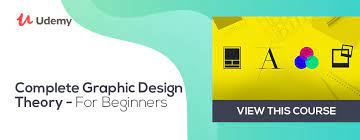
Lectures: 73
Duration: 8 hours and 28 minutes
By: Lindsay Marsh and Jeremy Deighan
Level: Beginner
Prerequisites: None
The following is a synopsis of the course:
This online graphic design course covers primary color and layout concepts, visual disciplines, and typography skills, as the name says. This Udemy offering includes ten digital materials, complete lifetime access, and a certificate of accomplishment led by brand experience professionals Lindsay Marsh and Jeremy Deighan.
After finishing this course, you should be prepared to improve your design approach and become a more critical storyteller.
Important Points to Remember:
- You will have intermediate to advanced theoretical graphic design skills that you can immediately use in your career, employment, hobby, or business.
- You will receive a proper understanding of the most prevalent graphic design concepts and the thought process behind them.
- You will be given real-world, practical assignments to follow and practice with.
- You will get the expertise and knowledge necessary to use graphic design basics in your everyday life.
- You will assess color theory and how it pertains to goods, art, branding, and advertising in the real world.
- You will study typographic theory and how type is used in print and digital media.
- You will learn to compose photographs and combine them with graphic design components to produce great artwork.
Student reviews:
“This course is a good choice for both new and seasoned designers. I have been studying graphic design for a long, but this course has taught me a lot I did not know before. For instance, the text has various names (kerning, orphan, leading, and so on), why some fonts work together and why they do not, color theory, and more. I am excited to finish this course and learn even more from the teachers.”
- Jonathan P.
“I enjoyed learning about design and plan to pursue it further in the future. Thank you for providing me with the opportunity to gain experience as a beginning. Exceptional Course”
- Jaylee E.
“The class was excellent. The only thing lacking was the skill to download and save as a reference the projects that were displayed (sometimes very briefly) in the lectures. There was already much downloadable content, but I would have wanted to see more.”
- Riccardo

Graphic Design Course for Free on Skillshare
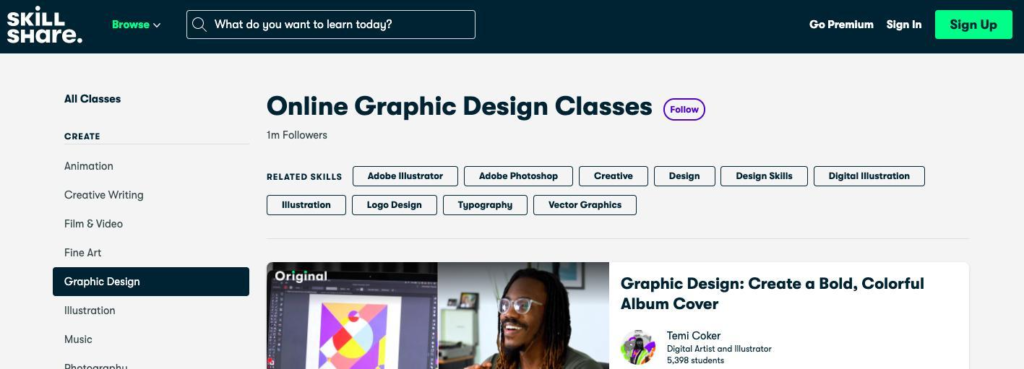
Duration: Self-paced
Rating: 4.5
Level: Intermediate (refresher course)
The following is a synopsis of the course:
With designer Sophia Yeshi’s entertaining and approachable workshop, get your design brain moving and explore a new way to express yourself.
Join Sophia for a fun and informative workshop that deconstructs graphic design principles and provides you with a new set of aids to express yourself creatively. Sophia’s art is bold, unapologetic, vibrant, and beautiful to look at, and she draws inspiration from her sentiments and her fascination with the world around her.
You will learn all you need to know about graphic design from Sophia and a few things you did not know about yourself – What colors you are drawn to, what kinds of phrases energize or inspire you, or your unspoken fascination with all possible fonts.
Sophia’s workshop is geared for beginning designers who have a basic grasp of Adobe Illustrator, but students of all expertise are welcome to attend and learn.
There are 12 lessons in this class (1h 13m) – Introduction, Emotion, and Art, Graphic Design Fundamentals, Choosing References, Getting Your Artboards Ready, Choosing Your Fonts, Creating Your Second Design, Choosing Your Colors, Textures, and Finishing Touches, Final Thoughts.
Important Points to Remember:
- Balance, rhythm, and more basic design elements are covered in this crash course
- A glimpse at Sophia’s inspiration and reference process from behind the scenes.
- A report on how to create emotional palettes.
- Several entertaining and fascinating tips and tricks on Effects in Adobe Illustrator
- You will have at least one finished typographic design and a whole kind of artistic expression at the end of the program, one that you will use often.
Learn Adobe Photoshop from Scratch on Udemy
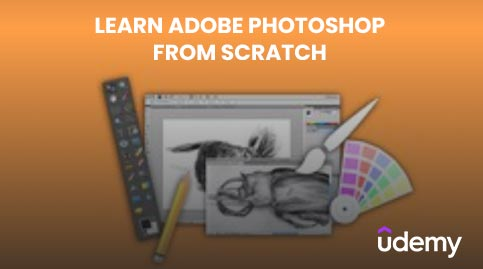
Rating: 4.5 on 5
On-demand video duration: 8 hours
Level: Beginner
Prerequisites: None
The following is a synopsis:
Adobe Photoshop is used by graphic designers, photographers, and artists alike. This Adobe Photoshop course is for beginners and intermediate users who want to learn how to understand and quickly assimilate the software’s complexities.
Because of the course’s unique task-based methodology, students learn Photoshop design concepts and methods and apply them to various personal and commercial ventures. The course starts with a basic design overview before selecting, modifying, creating, and creating workspace management tools. It also includes professional design concepts and Photoshop tips and tricks to get you started.
This course provides a thorough overview of professional Photoshop design fundamentals. You will undoubtedly learn a great deal and be able to use Photoshop for a variety of business and personal tasks.
Important Points to Remember:
- Interpret how to use photo editing software to make your photos seem better.
- Learn how to manipulate and create with a variety of tools.
- There are a lot of valuable ideas and tactics for skilled designers in this book.
- Learn how to utilize Photoshop to create various effects with an overview of Photoshop features.
- Photoshop methods and effects are covered in depth in these detailed process courses.
- Adobe Photoshop instruction that is entirely hands-on.
- Professional designers will benefit from these helpful hints.
- Lectures using a task-based approach focusing on learning outcomes.
- Lectures about photoshop methods and effects.
Student reviews:
“Great start to the course. The objective of taking the course is to study photography. I followed without difficulty. I have never worked with Adobe Photoshop before. After finishing the courses, I found them to be thorough and both the video and written material to be great. However, the spoken word is not always accurately translated into the written word.”
- Alexandra K.
“Adobe’s step-by-step overview of all the components and features available in this lesson makes it simple to get started with the software.”
- Peter C.
“I had learned enough to be able to start on my own. I will put the resources offered to good use. Now I have a better understanding of Photoshop. At first, it was a little intimidating. The course was enjoyable. There will be a couple of more classes.”
- Alfredo R.
Nanodegree Program in User Experience Design on Udacity
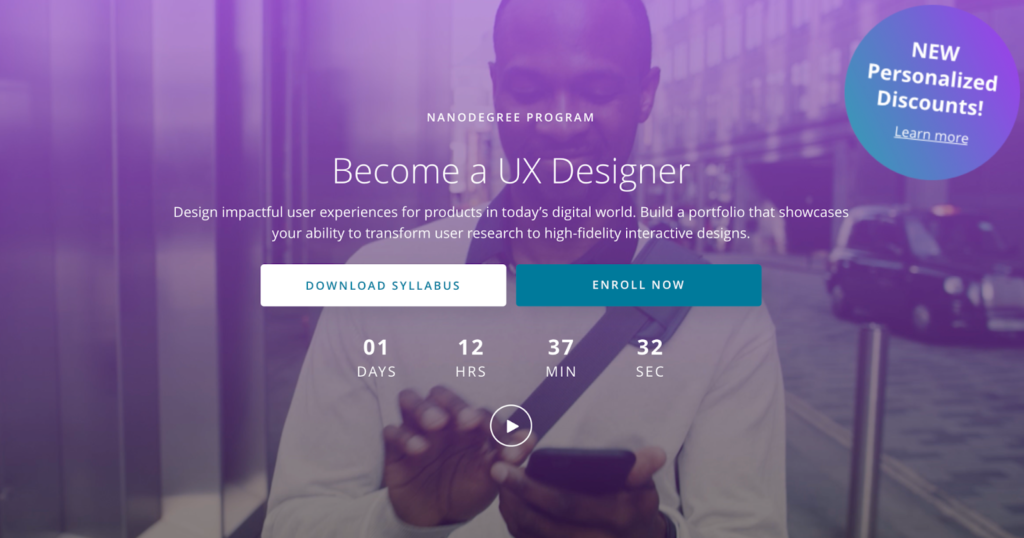
Duration: 10 hours each week, three months
Rating: 4.6 out of 5
Level: Beginner
Prerequisites: None
Udacity offers:
- Industry experts’ real-world projects
You will master the IT skills employers demand with real-world projects and engaging curricula created in collaboration with top-tier firms.
- Support from a technical mentor
The skilled mentors assist you in your learning by answering your questions, motivating you, and ensuring that you stay on track.
- Services for job seekers
To aid your progress in your career and secure a high-paying position, you will receive access to résumé assistance, a Github portfolio evaluation, and LinkedIn profile optimization.
- Program of study that is adaptable
Create a timetable for earning that works for you. Learn at your speed and schedule to achieve your specific objectives.
The following is a synopsis of the course:
This Nanodegree program in User Experience Design covers UX foundations and design research. You will be able to go from concepts to low-fidelity prototypes and from prototypes to high-fidelity UX designs once you have completed the program.
Learners with some graphic design experience should improve their UX abilities for app and web design. You will also learn about interaction theory and how to make more user-friendly structures.
The training covers everything from visual design fundamentals to UX design principles and turning low-fi sketches into high-fi interactive designs suitable for engineering handoff using Figma.
Following these classes, you will complete a capstone project in which you will create a case study that may be included in your UX design portfolio. The projects will provide you with real-world UX design experience and allow you to demonstrate your ability to research, develop, and prototype functional and aesthetically attractive apps and websites.
Important points to remember:
- Learn the fundamentals of human-centered design and scope a design task correctly.
- Learn the design research principles to discover the user and the solutions they require.
- Understand how to run a design sprint and turn research results into a prototype that can be tested with real people.
- To create engaging and robust designs, learn sophisticated user interface principles.
- Learn how to leverage engagement to enhance design and user experiences.
- Work on real-world projects designed by experts in the field.
- Get access to career assistance and technical mentorship.
Student reviews:
“I like the software and had much fun working on the first assignment. I believe I now have a better knowledge of performing UX research. I like the project and the material. Thank you for putting this seminar together! Whole, the information is excellent, and the overall experience is superior to that of other programs I have used. I am looking forward to continuing!”
- Tiffany H.
“So far, I am enjoying this course a lot. It is difficult for me because my present job sometimes requires a 45-50 hour work week. Therefore I find it difficult to find extra time to keep up with the program. Having said that, I thoroughly like each and every course.”
- RKG
“Udacity could serve as an example of how 21st-century colleges should be structured. Udacity gives close attention to every detail in each class and uses high-quality materials.”
- Tonka G.
How to Select the Most Appropriate Graphic Design Course
Here are a few criteria to determine the most appropriate graphic design course.
Certification
Are you looking for a certified course? Or is it to learn something new? One of the first things would be to narrow down your reason for your interest in graphic designing.
Fee structure
Once you have decided the “why” behind your intention to learn, you can move on to determining how much it is worth to you. Compare prices on the internet; degrees would be more professional while a simple diploma may be more affordable and better for a part-time interest/hobby.
Customization
A reputable school should provide you with a variety of customization choices, such as weekend courses, part-time, full-time, and even fast-track courses. This way, you can master every area of graphic design at your speed and without jeopardizing your other obligations.
Here are some of the top graphic design resources available online:
- General Assembly
- Skillshare
- LinkedIn Education (formerly Lynda.com)
- Udemy
- Coursera
Depending on the university, you can pursue a three- or four-year program; however, all degrees will focus on topics such as:
- Drawing
- Photography
- Design Methodologies
- Theoretical Art
- Theory of Visual Communication
- Illustration
- Design for the Internet
Once you have accumulated a body of work that you are happy with, compile it all into an online graphic design portfolio to let clients know you are available.
Though, you’re not done yet. It is impossible to overestimate the value of networking and community development for graphic artists. Building relationships among your graphic design peers is critical for honing your skills, engaging in helpful discussions with industry professionals, and gaining new opportunities through referrals and partnerships.
Start with social networking sites like Facebook and LinkedIn. There are many design communities and organizations that exchange information and resources.
Key Takeaways
- Graphic design is the most significant in terms of art and distinctiveness.
- To provoke a response from the audience, a good design should be straightforward, readable, and appealing.
- A design displays the designer’s ability and originality. It is a means for viewers and designers to interact with one another.
- For someone interested in pursuing a career in graphic design, various possibilities are accessible in the design profession.
Conclusion
Graphic design has quickly become one of the most sought-after jobs globally, as modern organizations fiercely embrace the internet business model. A career as a graphic designer pays well and gives students a wide range of options to express themselves creatively.
A graphic designer’s profession includes generating logos and website designs that may express a brand’s or product’s philosophy through pictures and designing package layouts for miscellaneous items.
Great minds should be nurtured at educational institutions, and they will shape the future of graphic design. When it comes to the potential of working in graphic design, you now have more options than ever before.
You are free to apply to any online graphic design course offered in other countries. The more you learn and build your talents, the more professional graphic designer you will become.
FAQs
Graphic design is not difficult to learn, but it does involve creative thinking, a flair for art and design, and time and commitment. Graphic design necessitates acquiring the required tools and comprehension of and application of design ideas and theories.
Yes, you can learn basic graphic designing in six months. However, these will most likely be diploma or certificate courses and not degrees.
Graphic designers’ employment is expected to expand by 3% between 2020 and 2030, slower than the average for all occupations. Despite slow job growth, graphic designers are expected to have roughly 23,900 opportunities each year on average during the next ten years.
In 11th grade, you can choose any topic, including science, business, or the arts, to pursue a career as a graphic designer. You can join a graphic design course from any recognized board, regardless of your educational background.
Given the criteria outlined above, we believe a decent starting hourly pay for an absolute novice freelance designer should be in the range of $20–$30 per hour. However, as your experience and skill level improve, it is critical to boost your pace gradually.
Latest Blogs
Explore how Google’s 2025 AI search updates triggered ranking chaos. Learn actionable strategies to adapt your SEO for AI Overviews, zero-click searches, and SERP volatility. Stay ahead now.
Learn how to rank on AI search engines like ChatGPT, Perplexity, and Gemini by optimizing your content for authority, structure, and relevance. Stay ahead in AI-driven search with this strategic guide.
Explore the best healthcare SEO services for your medical practice. Improve online visibility and effectively reach more patients in need of your services.
Get your hands on the latest news!
Similar Posts
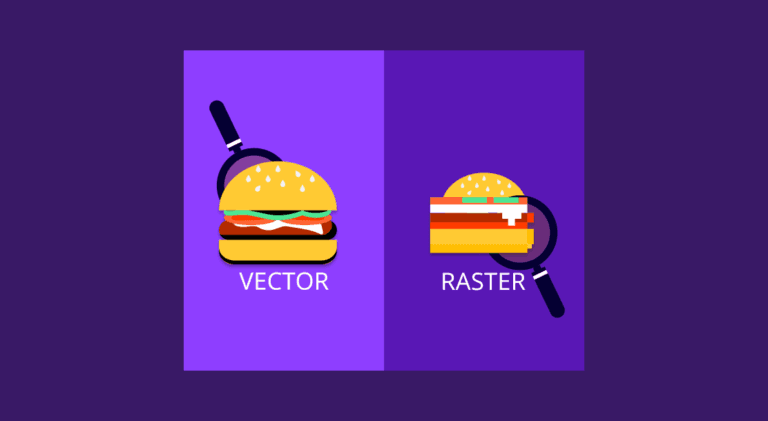
Design
6 mins read
Studying The Difference Between Vector And Raster Images
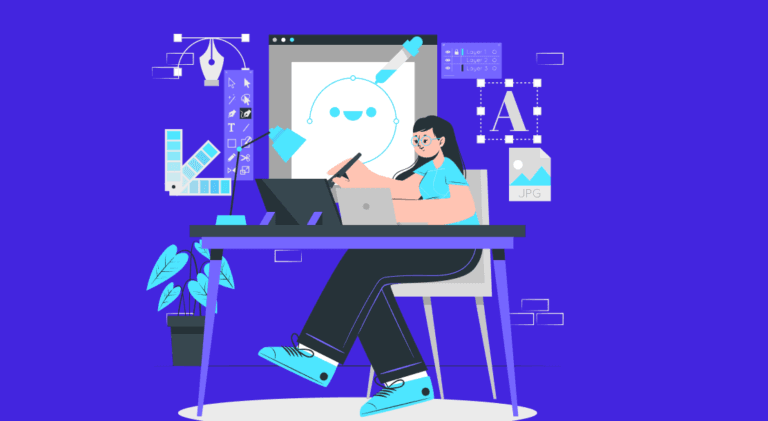
Design
4 mins read
All About Motion Graphics and Its Role in Animation
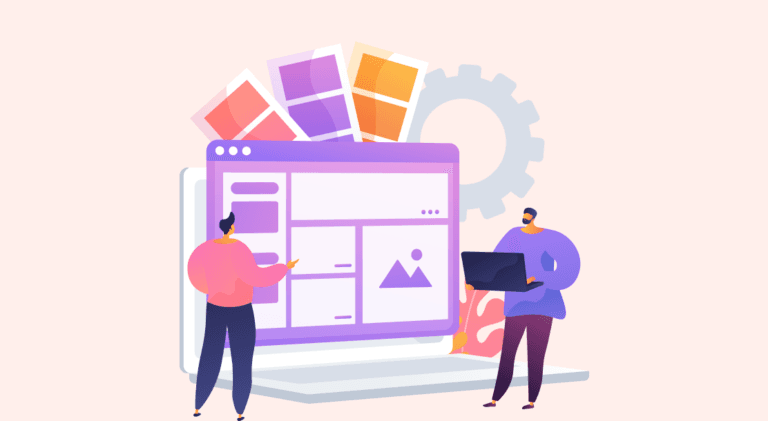
Design
5 mins read